Pharmacological interventions for asymptomatic carotid stenosis
- PMID: 37565307
- PMCID: PMC10401652
- DOI: 10.1002/14651858.CD013573.pub2
Pharmacological interventions for asymptomatic carotid stenosis
Abstract
Background: Carotid artery stenosis is narrowing of the carotid arteries. Asymptomatic carotid stenosis is when this narrowing occurs in people without a history or symptoms of this disease. It is caused by atherosclerosis; that is, the build-up of fats, cholesterol, and other substances in and on the artery walls. Atherosclerosis is more likely to occur in people with several risk factors, such as diabetes, hypertension, hyperlipidaemia, and smoking. As this damage can develop without symptoms, the first symptom can be a fatal or disabling stroke, known as ischaemic stroke. Carotid stenosis leading to ischaemic stroke is most common in men older than 70 years. Ischaemic stroke is a worldwide public health problem.
Objectives: To assess the effects of pharmacological interventions for the treatment of asymptomatic carotid stenosis in preventing neurological impairment, ipsilateral major or disabling stroke, death, major bleeding, and other outcomes.
Search methods: We searched the Cochrane Stroke Group trials register, CENTRAL, MEDLINE, Embase, two other databases, and three trials registers from their inception to 9 August 2022. We also checked the reference lists of any relevant systematic reviews identified and contacted specialists in the field for additional references to trials.
Selection criteria: We included all randomised controlled trials (RCTs), irrespective of publication status and language, comparing a pharmacological intervention to placebo, no treatment, or another pharmacological intervention for asymptomatic carotid stenosis.
Data collection and analysis: We used standard Cochrane methodological procedures. Two review authors independently extracted the data and assessed the risk of bias of the trials. A third author resolved disagreements when necessary. We assessed the evidence certainty for key outcomes using GRADE.
Main results: We included 34 RCTs with 11,571 participants. Data for meta-analysis were available from only 22 studies with 6887 participants. The mean follow-up period was 2.5 years. None of the 34 included studies assessed neurological impairment and quality of life. Antiplatelet agent (acetylsalicylic acid) versus placebo Acetylsalicylic acid (1 study, 372 participants) may result in little to no difference in ipsilateral major or disabling stroke (risk ratio (RR) 1.08, 95% confidence interval (CI) 0.47 to 2.47), stroke-related mortality (RR 1.40, 95% CI 0.54 to 3.59), progression of carotid stenosis (RR 1.16, 95% CI 0.79 to 1.71), and adverse events (RR 0.81, 95% CI 0.41 to 1.59), compared to placebo (all low-certainty evidence). The effect of acetylsalicylic acid on major bleeding is very uncertain (RR 0.98, 95% CI 0.06 to 15.53; very low-certainty evidence). The study did not measure neurological impairment or quality of life. Antihypertensive agents (metoprolol and chlorthalidone) versus placebo The antihypertensive agent, metoprolol, may result in no difference in ipsilateral major or disabling stroke (RR 0.14, 95% CI 0.02 to1.16; 1 study, 793 participants) and stroke-related mortality (RR 0.57, 95% CI 0.17 to 1.94; 1 study, 793 participants) compared to placebo (both low-certainty evidence). However, chlorthalidone may slow the progression of carotid stenosis (RR 0.45, 95% CI 0.23 to 0.91; 1 study, 129 participants; low-certainty evidence) compared to placebo. Neither study measured neurological impairment, major bleeding, adverse events, or quality of life. Anticoagulant agent (warfarin) versus placebo The evidence is very uncertain about the effects of warfarin (1 study, 919 participants) on major bleeding (RR 1.19, 95% CI 0.97 to 1.46; very low-certainty evidence), but it may reduce adverse events (RR 0.89, 95% CI 0.81 to 0.99; low-certainty evidence) compared to placebo. The study did not measure neurological impairment, ipsilateral major or disabling stroke, stroke-related mortality, progression of carotid stenosis, or quality of life. Lipid-lowering agents (atorvastatin, fluvastatin, lovastatin, pravastatin, probucol, and rosuvastatin) versus placebo or no treatment Lipid-lowering agents may result in little to no difference in ipsilateral major or disabling stroke (atorvastatin, lovastatin, pravastatin, and rosuvastatin; RR 0.36, 95% CI 0.09 to 1.53; 5 studies, 2235 participants) stroke-related mortality (lovastatin and pravastatin; RR 0.25, 95% CI 0.03 to 2.29; 2 studies, 1366 participants), and adverse events (fluvastatin, lovastatin, pravastatin, probucol, and rosuvastatin; RR 0.76, 95% CI 0.53 to1.10; 7 studies, 3726 participants) compared to placebo or no treatment (all low-certainty evidence). The studies did not measure neurological impairment, major bleeding, progression of carotid stenosis, or quality of life.
Authors' conclusions: Although there is no high-certainty evidence to support pharmacological intervention, this does not mean that pharmacological treatments are ineffective in preventing ischaemic cerebral events, morbidity, and mortality. High-quality RCTs are needed to better inform the best medical treatment that may reduce the burden of carotid stenosis. In the interim, clinicians will have to use other sources of information.
پیشینه: تنگی شریان کاروتید عبارت است از باریک شدن شریانهای کاروتید. تنگی کاروتید بدون نشانه زمانی است که این تنگی در افراد بدون سابقه یا نشانههای این بیماری رخ میدهد. این عارضه ناشی از آترواسکلروز (atherosclerosis) است؛ یعنی تجمع چربی، کلسترول و دیگر مواد داخل و روی دیوارههای شریان. احتمال بروز آترواسکلروز در افرادی که عوامل خطر متعددی دارند، مانند دیابت، هیپرتانسیون، هیپرلیپیدمی و مصرف سیگار، بیشتر است. از آنجایی که این آسیب میتواند بدون نشانه ایجاد شود، اولین نشانه میتواند یک سکته مغزی کشنده یا ناتوان کننده باشد که به عنوان سکته مغزی ایسکمیک شناخته میشود. تنگی کاروتید منجر به وقوع سکته مغزی ایسکمیک در مردان بالای 70 سال شایعتر رخ میدهد. سکته مغزی ایسکمیک یک مشکل سلامت عمومی در سراسر جهان است. اهداف: ارزیابی تاثیرات مداخلات دارویی در درمان تنگی کاروتید بدون نشانه به منظور پیشگیری از بروزاختلالات نورولوژیکی، سکته مغزی ماژور یا ناتوان کننده یک طرفه (ipsilateral)، مرگومیر، خونریزی شدید، و دیگر پیامدها. روشهای جستوجو: پایگاه ثبت کارآزماییهای گروه سکته مغزی (stroke) در کاکرین، CENTRAL؛ MEDLINE؛ Embase؛ دو بانک اطلاعاتی دیگر، و سه پایگاه ثبت کارآزمایی را از زمان شروع به کار تا 9 آگوست 2022 جستوجو کردیم. همچنین فهرست منابع مرورهای سیستماتیک مرتبط را که شناسایی شدند، بررسی کرده و برای یافتن منابع بیشتر برای کارآزماییها با متخصصان این زمینه تماس گرفتیم. معیارهای انتخاب: همه کارآزماییهای تصادفیسازی و کنترل شده (randomised controlled trials; RCTs) را بدون در نظر گرفتن وضعیت انتشار و زبان نگارش مقاله وارد کردیم، که به مقایسه یک مداخله دارویی با دارونما (placebo)، عدم درمان، یا مداخله دارویی دیگر در درمان تنگی کاروتید بدون نشانه پرداختند. گردآوری و تجزیهوتحلیل دادهها: از پروسیجرهای استاندارد روششناسی (methodology) کاکرین استفاده کردیم. دو نویسنده مرور بهطور مستقل از هم به استخراج دادهها و ارزیابی خطر سوگیری (bias) در کارآزماییها پرداختند. در صورت لزوم، نویسنده سوم اختلافنظرات را حلوفصل کرد. قطعیت شواهد را برای پیامدهای کلیدی با استفاده از رویکرد درجهبندی توصیه، ارزیابی، توسعه و ارزشیابی (Grading of Recommendations Assessment, Development and Evaluation; GRADE) ارزیابی کردیم. نتایج اصلی: تعداد 34 RCT را با 11,571 شرکتکننده وارد کردیم. برای انجام متاآنالیز، دادههایی از فقط 22 مطالعه با 6887 شرکتکننده در دسترس بودند. میانگین دوره پیگیری 2.5 سال بود. هیچ یک از 34 مطالعه وارد شده اختلالات نورولوژیکی و کیفیت زندگی را ارزیابی نکردند. عامل ضد پلاکت (استیلسالیسیلیک اسید) در برابر دارونما استیلسالیسیلیک اسید (acetylsalicylic acid) در مقایسه با دارونما (1 مطالعه، 372 شرکتکننده) ممکن است تفاوتی اندک تا عدم تفاوت را در سکته مغزی ماژور یا ناتوان کننده یک طرفه (خطر نسبی (RR): 1.08؛ 95% فاصله اطمینان (CI): 0.47 تا 2.47)، مورتالیتی ناشی از سکته مغزی (RR: 1.40؛ 95% CI؛ 0.54 تا 3.59)، پیشرفت تنگی کاروتید (RR: 1.16؛ 95% CI؛ 0.79 تا 1.71)، و عوارض جانبی (RR: 0.81؛ 95% CI؛ 0.41 تا 1.59) ایجاد کند (همگی دارای شواهد با قطعیت پائین). تاثیر استیلسالیسیلیک اسید بر خونریزی شدید بسیار نامطمئن است (RR: 0.98؛ 95% CI؛ 0.06 تا 15.53؛ شواهد با قطعیت بسیار پائین). این مطالعه اختلالات نورولوژیکی یا کیفیت زندگی را اندازهگیری نکرد. عوامل آنتیهیپرتانسیو (متوپرولول و کلرتالیدون) در برابر دارونما عامل آنتیهیپرتانسیو، متوپرولول (metoprolol)، در مقایسه با دارونما ممکن است هیچ تفاوتی را در سکته مغزی ماژور یا ناتوان کننده یک طرفه (RR: 0.14؛ 95% CI؛ 0.02 تا 1.16؛ 1 مطالعه، 793 شرکتکننده) و مورتالیتی ناشی از سکته مغزی (RR: 0.57؛ 95% CI؛ 0.17 تا 1.94؛ 1 مطالعه، 793 شرکتکننده) ایجاد نکند (هر دو دارای شواهد با قطعیت پائین). با این حال، کلرتالیدون (chlorthalidone) در مقایسه با دارونما ممکن است سرعت پیشرفت تنگی کاروتید را کاهش دهد (RR: 0.45؛ 95% CI؛ 0.23 تا 0.91؛ 1 مطالعه، 129 شرکتکننده، شواهد با قطعیت پائین). هیچ یک از این مطالعات، اختلالات نورولوژیکی، خونریزی شدید، عوارض جانبی یا کیفیت زندگی را اندازهگیری نکردند. عامل آنتیکوآگولانت (وارفارین) در برابر دارونما شواهد در مورد تاثیرات وارفارین (warfarin) (1 مطالعه، 919 شرکتکننده) بر خونریزی شدید بسیار نامطمئن است (RR: 1.19؛ 95% CI؛ 0.97 تا 1.46؛ شواهد با قطعیت بسیار پائین)، اما ممکن است عوارض جانبی را در مقایسه با دارونما کاهش دهد (RR: 0.89؛ 95% CI؛ 0.81 تا 0.99؛ شواهد با قطعیت پائین). این مطالعه اختلالات نورولوژیکی، سکته مغزی ماژور یا ناتوان کننده یک طرفه، مورتالیتی ناشی از سکته مغزی، پیشرفت تنگی کاروتید یا کیفیت زندگی را اندازهگیری نکرد. عوامل کاهنده لیپید (آتورواستاتین، فلوواستاتین، لوواستاتین، پراواستاتین، پروبوکل و رزوواستاتین) در برابر دارونما یا عدم درمان عوامل کاهنده لیپید ممکن است تفاوتی اندک تا عدم تفاوت را در سکته مغزی ماژور یا ناتوان کننده یک طرفه (آتورواستاتین (atorvastatin)، لوواستاتین (lovastatin)، پراواستاتین (pravastatin)، و رزوواستاتین (rosuvastatin)؛ RR: 0.36؛ 95% CI؛ 0.09 تا 1.53؛ 5 مطالعه، 2235 شرکتکننده) مورتالیتی ناشی از سکته مغزی (لوواستاتین و پراواستاتین؛ RR: 0.25؛ 95% CI؛ 0.03 تا 2.29؛ 2 مطالعه، 1366 شرکتکننده) و عوارض جانبی (فلوواستاتین (fluvastatin)، لوواستاتین، پراواستاتین، پروبوکول (probucol) و رزوواستاتین؛ RR: 0.76؛ 95% CI؛ 0.53 تا 1.10؛ 7 مطالعه، 3726 شرکتکننده) در مقایسه با دارونما یا عدم درمان ایجاد کنند (همگی دارای شواهد با قطعیت پائین). این مطالعات اختلالات نورولوژیکی، خونریزی شدید، پیشرفت تنگی کاروتید یا کیفیت زندگی را اندازهگیری نکردند. نتیجهگیریهای نویسندگان: اگرچه شواهدی با قطعیت بالا برای حمایت از مداخله دارویی وجود ندارد، این مساله بدان معنا نیست که درمانهای دارویی در پیشگیری از رویدادهای ایسکمیک مغزی، موربیدیتی و مورتالیتی بیاثر هستند. انجام RCTهایی با کیفیت بالا برای آگاهی از بهترین درمان طبی که ممکن است بار (burden) تنگی کاروتید را کاهش دهد، مورد نیاز است. در این مدت، متخصصان بالینی باید از دیگر منابع اطلاعات استفاده کنند.
Trial registration: ClinicalTrials.gov NCT00134238 NCT00225589 NCT00000469 NCT00711919 NCT00185185 NCT00000514 NCT00368589 NCT00654394 NCT02546323 NCT01776424 NCT04730973.
Copyright © 2023 The Cochrane Collaboration. Published by John Wiley & Sons, Ltd.
Conflict of interest statement
CNBC: none known. NC: none known. CDQF: none known. LCUN: none known. VFMT: none known. RLGF: none known.
Figures


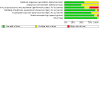
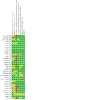



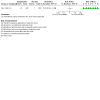
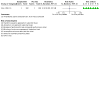
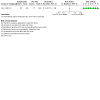
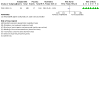

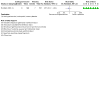
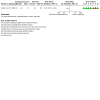
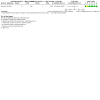


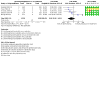
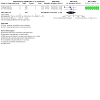
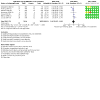
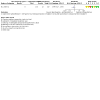
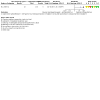

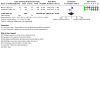
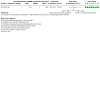
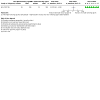
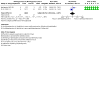
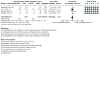


Update of
- doi: 10.1002/14651858.CD013573
References
References to studies included in this review
Anderssen 2005 {published data only (unpublished sought but not used)}
-
- Anderssen SA, Hjelstuen AK, Hjermann I, Bjerkan K, Holme I. Fluvastatin and lifestyle modification for reduction of carotid intima-media thickness and left ventricular mass progression in drug-treated hypertensives. Atherosclerosis 2005;178:387-97. [DOI: 10.1016/j.atherosclerosis.2004.08.033] - DOI - PubMed
Applegate 1991 {published data only (unpublished sought but not used)}
-
- Bond MG, Mercuri M, Borhani NO. The multicenter isradipine/diuretic atherosclerosis study (MIDAS): effect of a calcium antagonist on carotid arteries. Atherosclerosis 1994;109(1-2):294.
-
- Borhani NO, Bond MG, Sowers JR, Canossa-Terris M, Buckalew V, Gibbons ME, et al. The multicenter isradipine/diuretic atherosclerosis study: a study of the antiatherogenic properties of isradipine in hypertensive patients. Journal of Cardiovascular Pharmacology 1991;18 Suppl 3:S15-9. - PubMed
-
- Borhani NO, Brugger SB, Byington RP, on behalf of the US MIDAS Research Group. Multicenter study with isradipine and diuretics against atherosclerosis. Journal of Cardiovascular Pharmacology 1990;15 Suppl 1:S23-9. - PubMed
Blanco‐Colio 2004 {published data only (unpublished sought but not used)}
Bots 2007 {published data only (unpublished sought but not used)}
-
- Kastelein JJ, Bots ML, Riley WA, Evans GW, Meijer R, Revkin JH, et al. Design of a study comparing torcetrapib/atorvastatin with atorvastatin alone on atherosclerosis in patients with familial hypercholesterolemia. Atherosclerosis. Supplements 2005;6(1):51-2. [DOI: 10.1016/S1567-5688(05)80205-3] - DOI
-
- Kastelein JJ, Van Leuven SI, Evans GW, Riley WA, Revkin JH, Shear CL, et al. Designs of RADIANCE 1 and 2: carotid ultrasound studies comparing the effects of torcetrapib/atorvastatin with atorvastatin alone on atherosclerosis. Current Medical Research and Opinion 2007;23(4):885-94. [DOI: 10.1185/030079907X182121] - DOI - PubMed
Corti 2005 {published data only}
-
- Corti R, Fuster V, Fayad ZA, Worthley SG, Helft G, Chaplin WF, et al. Effects of aggressive versus conventional lipid-lowering therapy by simvastatin on human atherosclerotic lesions: a prospective, randomized, double-blind trial with high-resolution magnetic resonance imaging. Journal of the American College of Cardiology 2005;46(1):106-12. [DOI: 10.1016/j.jacc.2005.03.054] - DOI - PubMed
Côté 1995 {published data only (unpublished sought but not used)}
-
- Côté R, Battista R, Langlois Y. Asymptomatic cervical bruit study (ACBS). Stroke 1995;26:349. - PubMed
-
- Côté R, Battista RN, Abrahamowicz M, Langlois Y, Bourque F, Mackey A. Lack of effect of aspirin in asymptomatic patients with carotid bruits and substantial carotid narrowing. The Asymptomatic Cervical Bruit Study Group. Annals of Internal Medicine 1995;123(9):649‐55. [DOI: 10.7326/0003-4819-123-9-199511010-00002] - DOI - PubMed
-
- Côté R, the Asymptomatic Cervical Bruit Study Group. The Asymptomatic Cervical Bruit Study: progress report. Canadian Journal of Neurological Sciences 1994;21 Suppl 2:S7.
Crouse 2007 {published data only (unpublished sought but not used)}
-
- Crouse JR 3rd, Grobbee DE, O'Leary DH, Bots ML, Evans GW, Palmer MK, et al. Measuring effects on intima media thickness: an evaluation of rosuvastatin in subclinical atherosclerosis - the rationale and methodology of the METEOR Study. Cardiovascular Drugs and Therapy 2004;18(3):231-8. [DOI: 10.1023/B:CARD.0000033645.55138.3d] - DOI - PubMed
-
- Crouse JR, Bots ML, Evans GW, Palmer MK, O'Leary DH, Grobbee DE, et al. Does baseline carotid intima-media thickness modify the effect of rosuvastatin when compared with placebo on carotid intima-media thickness progression? The METEOR study. European Journal of Cardiovascular Prevention and Rehabilitation 2010;17:223-9. [DOI: 10.1097/HJR.0b013e3283359c38] - DOI - PubMed
-
- Crouse JR, Grobbee DE, O'Leary DH, Bots ML, Evans GW, Palmer MK, et al. Rosuvastatin arrests progression of carotid intima media thickness in low-risk individuals: main results of the METEOR study. Journal of the American College of Cardiology 2007;49(9):392A-3A. [DOI: 10.1016/j.jacc.2007.01.043] - DOI
-
- Crouse JR, Grobbee DE, O'Leary DH, Kastelein JJ, Bots ML, Evans GW, et al. Measuring effects on intima media thickness: an evaluation of rosuvastatin - the METEOR Study. Atherosclerosis. Supplements 2002;3(2):94. - PubMed
ELSA 2002 {published data only}
-
- Bond G, Dal Paly C, Hansson L, Magnani B, Mancia G, Neiss A, et al. The ELSA trial: protocol of a randomized trial to explore the differential effect of antihypertensive drugs on atherosclerosis in hypertension. Journal of Cardiovascular Pharmacology 1994;23 Suppl 5:S85-7. - PubMed
-
- Bond MG, Mercuri M, the ELSA Research Group. Potential modification of plaque behavior through the European Lacidipine Study on Atherosclerosis. Journal of Cardiovascular Pharmacology 1995;25 Suppl 3:S11-6. - PubMed
-
- Giannattasio C, Failla M, Hennig M, Hollweck R, Laurent S, Mallion JM, et al. Different relation between 24-h blood pressure and distensibility at different peripheral arteries. Data from the European Lacidipine Study on Atherosclerosis (ELSA). Journal of Hypertension 2005;23(3):557-62. [DOI: 10.1097/01.hjh.0000160212.33232.3e] - DOI - PubMed
-
- Leonetti G. Preliminary clinical results of the ELSA study. Annali Italiani di Medicina Interna 1995;10 Suppl:74S-7S. - PubMed
-
- Rahn KH, on behalf of the ELSA International Steering Committee and Investigators. The European Lacidipine Study on Atherosclerosis (ELSA): study design and results. Deutsche Medizinische Wochenschrift 2001;126 Suppl 3:S15.
Furberg 1994 {published data only (unpublished sought but not used)}
-
- Adams HP, Byington RP, Hoen H, Dempsey R, Furberg CD. Effect of cholesterol-lowering medications on progression of mild atherosclerotic lesions of the carotid arteries and on the risk of stroke. Cerebrovascular Diseases 1995;5:171-7. [DOI: 10.1159/000107847] - DOI
-
- Anonymous. Lovastatin reverses carotid atherosclerosis. Primary Cardiology 1994;20(8):10.
-
- Byington RP, Evans GW, Espeland MA, Applegate WB, Hunninghake DB, Probstfield J, et al. Effects of lovastatin and warfarin on early carotid atherosclerosis: sex-specific analyses. Asymptomatic Carotid Artery Progression Study (ACAPS) Research Group. Circulation 1999;100(3):e14-17. [DOI: ] - PubMed
-
- Dolecek TA, Bradham KH, Espeland MA, Margitic SE, Byington RP, Hoen H, et al. Maximising recruitment efforts in a drug lipid-lowering trial with dietary intervention to lower LDL cholesterol. Controlled Clinical Trials 1996;17:33-45. - PubMed
Hedblad 2001 {published data only (unpublished sought but not used)}
-
- BCAPS. BCAPS: Beta-blocker Cholesterol-lowering Asymptomatic Plaque Study. Cardio-Vascular Clinical Trials Forum: Registry of Recent and On-Going Clinical Trials (BioMedNet) 1998.
-
- Berglund G, Wikstrand J, Janzon L, Wedel H, Hedblad B. Low dose metoprolol and fluvastatin slow progression of atherosclerosis: main results from BCAPS. Atherosclerosis 2000;151(1):4.
-
- Hedblad B, Wikstrand J, Janzon L, Wedel H, Berglund G. Low-dose metoprolol CR/XL and fluvastatin slow progression of carotid intima-media thickness. Main results from a B-blocker Cholesterol-lowering Asymtomatic Plaque Study (BCAPS). Circulation 2001;103:1721-6. [DOI: 10.1161/01.CIR.103.13.1721] - DOI - PubMed
-
- Ostling G, Goncalves I, Wikstrand J, Berglund G, Nilsson J, Hedblad B. Long-term treatment with low-dose metoprolol CR/XL is associated with increased plaque echogenicity: the Beta-blocker Cholesterol-lowering Asymptomatic Plaque Study (BCAPS). Atherosclerosis Supplements 2011;12(1):67. - PubMed
-
- Ostling G, Gonçalves I, Wikstrand J, Berglund G, Nilsson J, Hedblad B. Long-term treatment with low-dose metoprolol CR/XL is associated with increased plaque echogenicity: the Beta-blocker Cholesterol-lowering Asymptomatic Plaque Study (BCAPS). Atherosclerosis 2011;215(2):440-5. [DOI: 10.1016/j.atherosclerosis.2010.12.031] - DOI - PubMed
Hu 2009 {published data only (unpublished sought but not used)}
Ikeda 2013 {published data only (unpublished sought but not used)}
-
- Koji I, Tomosaburo T, Hiroyuki Y, Kiyoaki M, Takahisa S, Takashi M, et al. Effect of intensive statin therapy on regression of carotid intima-media thickness in patients with subclinical carotid atherosclerosis (a prospective, randomized trial: PEACE (Pitavastatin Evaluation of Atherosclerosis Regression by Intensive Cholesterol-lowering Therapy) study). European Journal of Preventive Cardiology 2013;20(6):1069-79. [CLINICALTRIALS.GOV IDENTIFIER:: NCT00711919] [DOI: 10.1177/2047487312451539] [UNIQUE ID ISSUED BY UMIN: UMIN000001229] - DOI - PubMed
-
- NCT00711919. Pitavastatin on carotid intima-media thickness (PEACE). clinicaltrials.gov/ct2/show/record/NCT00711919 (first received 7 July 2008). [CLINICAL TRIALS REGISTER: NCT00711919]
Kadoglou 2010 {published data only (unpublished sought but not used)}
-
- Kadoglou NP, Sailer N, Moumtzouoglou A, Kapelouzou AT, Fotiadis G, Vitta I, et al. Aggressive lipid-lowering is more effective than moderate lipid-lowering treatment in carotid plaque stabilization. Journal of Vascular Surgery 2009;49(5 suppl 1):4S-5S. - PubMed
Meaney 2009 {published data only (unpublished sought but not used)}
Mercuri 1996 {published data only (unpublished sought but not used)}
-
- Baldassarre D, Veglia F, Gobbi C, Gallus G, Ventura A, Crepaldi G, et al. Intima-media thickness after pravastatin stabilizes also in patients with moderate to no reduction in LDL-cholesterol levels: the carotid atherosclerosis Italian ultrasound study. Atherosclerosis 2000;151(2):575-83. [DOI: 10.1016/s0021-9150(99)00434-7] - DOI - PubMed
-
- Mercuri M, Bond MG, Sirtori CR, Veglia F, Crepaldi G, Feruglio FS, et al. Pravastatin reduces carotid intima-media thickness progression in an asymptomatic hypercholesterolemic Mediterranean population: the Carotid Atherosclerosis Italian Ultrasound Study. American Journal of Medicine 1996;101(6):627-34. [DOI: 10.1016/s0002-9343(96)00333-6] - DOI - PubMed
-
- Sirtori CR, Bianchi G, Bond MG, D’Alo’ G, Gallus G, Liberatore S, et al. Pravastatin intervention trial on carotid artery atherosclerosis in patients with mild hypercholesterolemia: the CAIUS study. International Journal of Cardiovascular Imaging 1995;11(S2):119-24. [DOI: 10.1007/bf01419825] - DOI
Nohara 2012 {published data only (unpublished sought but not used)}000001174
-
- Nohara R, Daida H, Hata M, Kaku K, Kawamori R, Kishimoto J, et al. Effect of intensive lipid-lowering therapy with rosuvastatin on progression of carotid intima-media thickness in Japanese patients - Justification for Atherosclerosis Regression Treatment (JART) study. Circulation Journal 2012;76:221-9. [DOI: 10.1253/circj.CJ-11-0887] - DOI - PubMed
-
- Yamazaki T, Nohara R, Daida H, Hata M, Kaku K, Kawamori R, et al. Intensive lipid-lowering therapy for slowing progression as well as inducing regression of atherosclerosis in Japanese patients: subanalysis of the JART study. International Heart Journal 2013;54:33-9. [DOI: 10.1536/ihj.54.33] - DOI - PubMed
Norris 1990 {published data only (unpublished sought but not used)}
-
- Carotid Stenosis Study Group. Failure of metoprolol and aspirin to regress carotid stenosis. Stroke 1990;21:169. [DOI: 10.1161/01.STR.21.1.156] - DOI
-
- Norris JW, Ziliotto C, Taylor DW, Chambers BR, Bornstein NM, D'Alton JG, et al. Failure of metoprolol and aspirin to regress carotid stenosis. Neurology 1990;40 Suppl 1:415. [DOI: 10.1212/WNL.40.4_Suppl_1.1] - DOI
Reid 2005 {published data only (unpublished sought but not used)}
Salonen 1995 {published data only (unpublished sought but not used)}
-
- Salonen R, Nyyssonen K, Porkkal-sarataho E, Salonen JT. The Kuopio Atherosclerosis Prevention Study (KAPS): effect of pravastatin treatment on lipids, oxidation resistance of lipoproteins, and atherosclerotic progression. American Journal of Cardiology 1995;76:34C-39C. [DOI: 10.1016/s0002-9149(99)80468-8] - DOI - PubMed
-
- Salonen R, Nyyssonen K, Porkkala E, Rummukainen J, Belder R, Park J-S, et al. Kuopio atherosclerosis prevention study (KAPS). A population-based primary preventive trial of the effect of LDL lowering on atherosclerotic progression in carotid and femoral arteries. Circulation 1995;92(7):1758-64. [DOI: 10.1161/01.CIR.92.7.1758] - DOI - PubMed
-
- Salonen R, Nyyssonen K, Porkkata E, Rummukainen J, Salonen JT. KAPS: the effect of pravastatin on atherosclerotic progression in carotid and femoral arteries. Circulation 1994;90:I-127. - PubMed
Sawayama 2002 {published data only (unpublished sought but not used)}
-
- Sawayama Y, Hayashi J, Maeda N, Shimizu C, Tanaka Y, Kashiwagi S. The therapeutic effects of probucol and pravastatin on common carotid intima-media thickness in asymptomatic hypercholesterolemic Japanese patients. Atherosclerosis 2000;151(1):130.
-
- Sawayama Y, Shimizu C, Maeda N, Tatsukawa M, Kinukawa N, Koyanagi S, et al. Effects of probucal and pravastatin on common carotid atherosclerosis in patients with asymptomatic hypercholesterolemia. Fukuoka atherosclerosis trial (FAST). Journal of the American College of Cardiology 2002;39(4):610-6. [DOI: 10.1016/s0735-1097(01)01783-1] - DOI - PubMed
-
- Wada N, Sekiguchi M, Yoshioka N, Toyoshima H, Matsumoto A, Nomura M, et al. Effect of probucol and pravastatin on common-carotid atherosclerosis in diabetic patients with hypercholesterolemia. Journal of the Japan Diabetes Society 2005;48(1):53-6.
Semplicini 2000 {published data only (unpublished sought but not used)}
-
- Semplicini A, Maresca A, Simonella C, Chierichetti F, Pauletto P, Meneghetti G, et al. Cerebral perfusion in hypertensives with carotid artery stenosis: a comparative study of lacidipine and hydrochlorothiazide. Blood Pressure 2000;9:34-9. [DOI: 10.1080/080370500439407 · S] - PubMed
-
- Semplicini A, Simonella C, Meneghetti G, Chierichetti F, Santipolo N, Pauletto P, et al. Lacidipine and cerebral perfusion in uncomplicated essential hypertensives with mild to moderate carotid artery stenosis. Journal of Hypertension 1998;16 Suppl 2:S243.
Shinoda‐Tagawa 2002 {published data only}
Stumpe 2007 {published data only (unpublished sought but not used)}
-
- Ludwig M, Stumpe KO, Agabiti-Rosei E, Scholze J, Stumpe I, Zielinski T. Quantification of antihypertensive treatment effects on carotid atherosclerosis by 3-dimensional ultrasound: first report from the MORE trial. Stroke 2006;37(2):664.
-
- NCT00185185. Olmesartan Medoxomil in Atherosclerosis. clinicaltrials.gov/ct2/show/NCT00185185 (first received 12 September 2005). [CLINICALTRIALS.GOV IDENTIFIER:: NCT00185185]
-
- Stumpe KO, Agabiti-Rosei E, Zielinski T, Schremmer D, Scholze J, Laeis P, et al. Carotid intima-media thickness and plaque volume changes following 2-year angiotensin II-receptor blockade. The Multicentre Olmesartan atherosclerosis Regression Evaluation (MORE) study. Therapeutic Advances in Cardiovascular Disease 2007;1(2):97-106. [DOI: 10.1177/ 1753944707085982] - PubMed
Sutton‐Tyrrell 1994 {published data only (unpublished sought but not used)}
-
- Davis BR, Vogt T, Frost PH, Burlando A, Cohen J, Wilson A, et al. Risk factors for stroke and type of stroke in persons with isolated systolic hypertension. Stroke 1998;29:1333-40. - PubMed
-
- NCT00000514. Systolic Hypertension in the Elderly Program (SHEP). clinicaltrials.gov/ct2/show/NCT00000514 (first received 27 October 1999). [CLINICALTRIALS.GOV IDENTIFIER: ClinicalTNCT00000514]
-
- Sutton-Tyrrell K, Kuller LH, Wolfson SK. Blood pressure treatment slows the rate of progression of carotid stenosis in patients with isolated systolic hypertension. Journal of the American College of Cardiology 1993;21:70A. - PubMed
Tang 2009 {published data only (unpublished sought but not used)}
-
- ISRCTN64894118. A 12-week, randomised, double-blind study evaluating the effects of low-dose (10 mg) and high-dose (80 mg) atorvastatin on macrophage activity and carotid plaque inflammation as determined by ultra small super-paramagnetic iron oxide (USPIO) enhanced carotid magnetic resonance imaging (MRI). www.isrctn.com/ISRCTN64894118 (first applied 3 March 2006). [DOI: 10.1186/ISRCTN64894118] - DOI
-
- Li Z-Y, Tang T, Gillard J. Aggressive atorvastatin decreases wall shear stress in the carotid artery. Stroke 2012;43 Suppl 1:A2790.
-
- NCT00368589. Effects of atorvastatin on macrophage activity and plaque inflammation using magnetic resonance imaging. clinicaltrials.gov/ct2/show/NCT00368589 (first received 22 August 2006). [CLINICAL TRIALS REGISTER:: NCT00368589]
-
- Sadat U, Howarth SP, Usman A, Taviani V, Tang TY, Graves MJ, et al. Effect of low- and high-dose atorvastatin on carotid artery distensibility using carotid magnetic resonance imaging - A post-hoc sub group analysis of ATHEROMA (atorvastatin therapy: effects on reduction of macrophage activity) study. Journal of Atherosclerosis and Thrombosis 2013;20(1):46-56. [DOI: 10.5551/jat.12633] - DOI - PubMed
Terpstra 2004 {published data only}
-
- Terpstra WF, May JF, Smit AJ, De Graeff PA, Meyboom-de Jong B, Crijns HJ. Effects of amlodipine and lisinopril on intima-media thickness in previously untreated, elderly hypertensive patients (the ELVERA trial). Journal of Hypertension 2004;22:1309-16. [DOI: 10.1097/01.hjh.0000125412.50839.b5] - DOI - PubMed
Underhill 2008 {published data only (unpublished sought but not used)}
-
- Du R, Cai J, Ping Y, Wang Q, Liu D, Wu H. Effect of low dose rosuvastatin therapy on regression of carotid plaque and vasa vasorums in Chinese population: a prospective clinical trial by MRI. Journal of the American College of Cardiology 2013;61(10 Suppl 1):E938.
-
- Hatsukami TS, Zhao XQ, Yuan C, Tessier JJ, Miller E, Pears JS. Study design for a randomized, double-blind trial to assess the effect of 24 months of dosing with rosuvastatin on progression of carotid artery atheroma in moderately hypercholesterolemic patients with asymptomatic carotid stenosis. Atherosclerosis. Supplements 2001;2:47-8. [DOI: 10.1016/s1567-5688(01)80057-x] - DOI
-
- NCT00654394. Progression of carotid artery atheroma in moderately hypercholesterolemic subjects. clinicaltrials.gov/ct2/show/NCT00654394 (first received 3 April 2008). [CLINICAL TRIALS REGISTER: NCT00654394]
-
- Underhill HR, Yuan C, Zhao XQ, Kraiss LW, Parker DL, Saam T, et al. Effect of rosuvastatin therapy on carotid plaque morphology and composition in moderately hypercholesterolemic patients: a high-resolution magnetic resonance imaging trial. American Heart Journal 2008;155(3):584.e1–584.e8. [DOI: 10.1016/j.ahj.2007.11.018] [CLINICALTRIALS.GOV IDENTIFIER: NCT00654394] - DOI - PubMed
VHAS 1998 {published data only}
-
- Magnani B, Dal Palu C, Zanchetti A. Preliminary clinical experience with calcium antagonists in atherosclerosis. Drugs 1992;44 Suppl 1:128-33. - PubMed
-
- Zanchetti A, Magnani B, Dal Palu C, on behalf of the VHAS Investigators. Verapamil in Hypertension and Atherosclerosis Study (VHAS): results of ultrasonography evaluations. Journal of Hypertension 1997;15 Suppl 4:S91.
-
- Zanchetti A, Magnani B, Dal Palu C, on behalf of the Verapamil-Hypertension Atherosclerosis Study (VHAS) Investigators. Atherosclerosis and calcium antagonists: the VHAS. Journal of Human Hypertension 1992;6 Suppl 2:S45-8. - PubMed
-
- Zanchetti A, Rosei EA, Dal Palu C, Leonetti G, Magnani B, Pessina A, et al. The Verapamil in Hypertension and Atherosclerosis Study (VHAS): results of long-term randomized treatment with either verapamil or chlorthalidone on carotid intima-media thickness. Journal of Hypertension 1998;16:1667-76. - PubMed
Yamada 2009 {published data only (unpublished sought but not used)}UMIN000001114
-
- UMIN000001114. Effects of lipid lowering by atorvastatin on carotid atherosclerotic plaque (ACAP) study: a randomized trial for analysis of qualitative change in carotid atherosclerrotic plaque with IB echo and Black Blood MRI. upload.umin.ac.jp/cgi-open-bin/ctr_e/ctr_view.cgi?recptno=R000001347 (first received 01 June 2006). [UNIQUE ID ISSUED BY UMIN: UMIN000001114]
-
- Yamada K, Yoshimura S, Kawasaki M, Enomoto Y, Asano T, Minatoguchi S, et al. Effects of atorvastatin on carotid atherosclerotic plaques: a randomized trial for quantitative tissue characterization of carotid atherosclerotic plaques with integrated backscatter ultrasound. Cerebrovascular Diseases 2009;28:417-24. [DOI: 10.1159/000235746] - DOI - PubMed
Yamamoto 2011 {published data only (unpublished sought but not used)}C000000319
-
- C000000319. The effect of losartan and amlodipine on left ventricular diastolic function in patients with mild-to-moderate hypertension. upload.umin.ac.jp (first received 01 February 2006). [UMIN-CTR CLINICAL TRIAL REGISTER:: C000000319]
-
- Yamamoto K, Ozaki H, Takayasu K, Akehi N, Fukui S, Sakai A, et al. The effect of losartan and amlodipine on left ventricular diastolic function and atherosclerosis in Japanese patients with mild-to-moderate hypertension (J-ELAN) study. Hypertension Research 2011;34:325-30. [DOI: 10.1038/hr.2010.237] [UMIN CLINICAL TRIALS REGISTRY: C000000319] - DOI - PubMed
Zanchetti 2004 {published data only (unpublished sought but not used)}
-
- The PHYLLIS Project Group. Plaque hypertension lipid-lowering Italian Study (PHYLLIS): a protocol for non-invasive evaluation of carotid atherosclerosis in hypercholesterolaemic hypertensive subjects. Journal of Hypertension 1993;11 Suppl 5:S314-5. - PubMed
-
- Zanchetti A, Crepaldi G, Bond G, Gallus G, Veglia F, Mancia G, et al. Different effects of antihypertensive regimens based on fosinopril or hydrochlorothiazide with or without lipid lowering by pravastatin on progression of asymptomatic carotid atherosclerosis. Principal results of PHYLLIS - a randomized double-blind trial. Stroke 2004;35:2807-12. [DOI: 10.1161/01.STR.0000147041.00840.59] - DOI - PubMed
-
- Zanchetti A, Crepaldi G, Bond G, Gallus G, Veglia M, Mancia G, et al. Effects of fosinopril and pravastatin on progression of asymptomatic carotid atherosclerosis in hypertension: results of the Plaque Hypertension Lipid Lowering Italian Study (PHYLLIS). Journal of Hypertension 2003;21 Suppl 4:S346.
-
- Zanchetti A, Crepaldi G, Bond MG, Gallus GV, Veglia F, Ventura A, et al. Systolic and pulse blood pressures (but not diastolic blood pressure and serum cholesterol) are associated with alterations in carotid intima–media thickness in the moderately hypercholesterolemic hypertensive patients of the Plaque Hypertension Lipid Lowering Italian Study. Journal of Hypertension 2001;19(1):79-88. [DOI: 10.1097/00004872-200101000-00011] - DOI - PubMed
Zeng 2004 {published data only (unpublished sought but not used)}
-
- Zeng X, Zeng X Sr, Li Y, Zeng Y II. Effects of pravastatin on carotid plaques and preventing stroke in patients with hypercholesterolemia. Stroke 2004;35(1):257. [DOI: ]
Zheng 2022 {published and unpublished data}
-
- Wang Y, Wang A, Li H, Li Z, Hu B, Li X, et al. Measuring effects on intima-media thickness: an evaluation of rosuvastatin in Chinese subjects with subclinical atherosclerosis - design, rationale, and methodology of the METEOR-China study. Trials 2020;21(1):921. [DOI: 10.1186/s13063-020-04741-0] - DOI - PMC - PubMed
References to studies excluded from this review
Anand 2018 {published data only (unpublished sought but not used)}
-
- Anand SS, Bosch J, Eikelboom JW, Connolly SJ, Diaz R, Widimsky P, et al. Rivaroxaban with or without aspirin in patients with stable peripheral or carotid artery disease: an international, randomised, double-blind, placebo-controlled trial. Lancet 2018;391(10117):219-29. [DOI: 10.1016/ S0140-6736(17)32409-1] - PubMed
-
- Bhatt DL. Setting a new direction in CAD and PAD - the COMPASS trial. Cardiology 2018;140 Suppl 1:200.
-
- Bosch J, Eikelboom JW, Connolly SJ, Bruns NC, Lanius V, Yuan F, et al. Rationale, design and baseline characteristics of participants in the cardiovascular outcomes for people using anticoagulation strategies (COMPASS) trial. Canadian Journal of Cardiology 2017;33(8):1027-35. [DOI: 10.1016/j.cjca.2017.06.001] - DOI - PubMed
-
- Darmon A, Sorbets E, Ducrocq G, Elbez Y, Abtan J, Popovic B, et al. Identifying higher risk patients among the COMPASS-eligible population: an analysis from the REduction of Atherothrombosis for Continued Health (REACH) Registry. European Heart Journal 2018;39 Suppl 1:1084. [DOI: 10.1016/j.acvdsp.2018.10.007] - DOI - PubMed
Bondjers 2000 {published data only (unpublished sought but not used)}
-
- Bondjers G, Wiklund O, Hulthe J, Schmidt C, Olofsson SO, Wikstrand J. The effect of metoprolol CR/XL on atherosclerosis. Atherosclerosis 2000;151(1):92. [DOI: 10.1016/s0021-9150(00)80419-0] - DOI
Davidson 2012 {published data only}
-
- Davidson M, Rosenson RS, Maki KC, Nicholls SJ, Ballantyne CM, Setze C, et al. Study design, rationale, and baseline characteristics: evaluation of fenofibric acid on carotid intima-media thickness in patients with type IIb dyslipidemia with residual risk in addition to atorvastatin therapy (FIRST) trial. Cardiovascular Drugs and Therapy 2012;26:349-58. [CLINICALTRIALS.GOV: NCT00616772] [DOI: 10.1007/s10557-012-6395-z] - DOI - PMC - PubMed
Duman 2007 {published data only (unpublished sought but not used)}
-
- Duman D, Demirtunc R, Sahin S, Esertas K. The effects of simvastatin and levothyroxine on intima-media thickness of the carotid artery in female normolipemic patients with subclinical hypothyroidism: a prospective, randomized-controlled study. Journal of Cardiovascular Medicine 2007;8:1007-11. - PubMed
Esposito 2004 {published data only}
-
- Esposito K, Giugliano D, Nappo F, Marfella R, on behalf of the Campanian Postprandial Hyperglycemia Study Group. Regression of carotid atherosclerosis by control of postprandial hyperglycemia in type 2 diabetes mellitus. Circulation 2004;110:214-9. [DOI: 10.1161/01.CIR.0000134501.57864.66] - DOI - PubMed
Fayad 2011 {published data only}
-
- Calcagno C, Ramachandran S, Izquierdo-Garcia D, Mani V, Millon A, Rosenbaum D. The complementary roles of dynamic contrast-enhanced MRI and 18F-fluorodeoxyglucose PET/CT for imaging of carotid atherosclerosis. European Journal of Nuclear Medicine and Molecular Imaging 2013;40(12):1884-93. [DOI: 10.1007/s00259-013-2518-4] - DOI - PMC - PubMed
-
- Fayad ZA, Mani V, Woodward M, Kallend D, Bansilal S, Pozza J, et al. Rationale and design of dal-PLAQUE: a study assessing efficacy and safety of dalcetrapib on progression or regression of atherosclerosis using magnetic resonance imaging and 18F-fluorodeoxyglucose positron emission tomography/computer tomography. American Heart Journal 2011;162:214-21. - PMC - PubMed
-
- Fayad ZA, Mani V, Woodward M, Woodward M, Kallend D, Abt M, Burgess T, et al. Safety and efficacy of dalcetrapib on atherosclerotic disease using novel non-invasive multimodality imaging (dal-PLAQUE): a randomised clinical trial. Lancet 2011;378(9802):1547-59. [DOI: 10.1016/S0140-6736(11)61383-4] - DOI - PMC - PubMed
Hosomi 2001 {published data only}
-
- Hosomi N, Mizushige K, Ohyama H, Hatanaka Y, Matsuo H, Koziol JA. ACE inhibition with enalapril slows progressive intima-media thickening of common carotid artery in NIDDM patients. Circulation 2000;102(18 Suppl 2):II-869. - PubMed
-
- Hosomi N, Mizushige K, Ohyama H, Takahashi T, Kitadai M, Hatanaka Y, et al. Angiotensin-converting enzyme inhibition with enalapril slows progressive intima-media thickening of the common carotid artery in patients with non-insulin-dependent diabetes mellitus. Stroke 2001;32:1539-45. [DOI: 10.1161/01.str.32.7.1539] - DOI - PubMed
Huang 2006 {published data only (unpublished sought but not used)}
-
- Huang Z, Lei MX, Liu L, Tang QB. Effects of rosiglitazone on the IMTc and serum MMP-9 levels in newly diagnosed Type 2 diabetic patients. Zhong Nan da Xue Xue Bao Yi Xue Ban (Journal of Central South University - Medical Sciences) 2006;31(3):367-72. - PubMed
Ichihara 2006 {published data only}
-
- Ichihara A, Kaneshiro Y, Takemitsu T, Sakoda M. Effects of amlodipine and valsartan on vascular damage and ambulatory blood pressure in untreated hypertensive patients. Journal of Human Hypertension 2006;20:787-94. [DOI: ] - PubMed
Igase 2012 {published data only (unpublished sought but not used)}
Ito 2004 {published data only (unpublished sought but not used)}
Koeijvoets 2005 {published data only (unpublished sought but not used)}
-
- Koeijvoets KC, Rodenburg J, Hutten BA, Wiegman A, Kastelein JJ, Sijbrands EJ. Low-density lipoprotein receptor genotype and response to pravastatin in children with familial hypercholesterolemia. Substudy of an Intima-Media Thickness Trial. Circulation 2005;112:3168-73. [DOI: 10.1161/CIRCULATIONAHA.105.565507] - DOI - PubMed
Laurora 1998 {published data only}
-
- Laurora G, Cesarone MR, Belcaro G, Sanctis MT, Pomante P, Incandela L, et al. Control of arteriosclerosis progression in high risk subjects treated with mesoglycan. Evaluation of intima-media thickness. Minerva Cardioangiologica 1998;46(3):41-8. - PubMed
Ludwig 2002 {published data only}
-
- Ludwig M, Stapff M, Ribeiro A, Fritschka E, Tholl U, Smith RD, et al. Comparison of the effects of losartan and atenolol on common carotid artery intima-media thickness in patients with hypertension: results of a 2-year, double-blind, randomized, controlled study. Clinical Therapeutics 2002;24(7):1175-93. [DOI: 10.1016/s0149-2918(02)80028-5] - DOI - PubMed
Mazzone 2006 {published data only}
-
- Davidson M, Meyer PM, Haffner S, Feinstein S, D'Agostino R, Kondos GT, et al. Increased high-density lipoprotein cholesterol predicts the pioglitazone-mediated reduction of carotid intima-media thickness progression in patients with Type 2 Diabetes Mellitus. Circulation 2008;117(16):2123-30. [DOI: 10.1161/CIRCULATIONAHA.107.746610] - DOI - PubMed
-
- Mazzone T, Meyer PM, Feinstein SB, Davidson MH, Kondos GT, D'Agostino RB, et al. Effect of pioglitazone compared with glimepiride on carotid intima-media thickness in type 2 diabetes: a randomized trial. JAMA 2006;296(21):2572-81. [CLINICALTRIALS.GOV IDENTIFIER:: NCT00225264] [DOI: 10.1001/jama.296.21.joc60158] - DOI - PubMed
-
- NCT00225264. Efficacy study of pioglitazone and glimepiride on the rate of progression of atherosclerotic disease (CHICAGO). www.clinicaltrials.gov/ct2/show/NCT00225264 (first received 23 September 2005). [CLINICALTRIALS.GOV: NCT00225264]
Meuwese 2009 {published data only}
-
- NCT00151788. Efficacy and safety of the ACAT Inhibitor CS-505 (pactimibe) for reducing the progression of carotid artery disease. (CAPTIVATE study). www.clinicaltrials.gov/ct2/show/NCT00151788 (first received 7 September 2005). [CLINICALTRIALS.GOV IDENTIFIER: NCT00151788]
Mizuguchi 2008 {published data only (unpublished sought but not used)}
Mok 2010 {published data only (unpublished sought but not used)}
-
- Mok CC, Lai J, Wong CK, Lam CS. Effect of rosuvastatin on homocysteine, hsCRP and endothelial markers in systemic lupus erythematosus (SLE): a randomized controlled trial. Lupus 2010;19 Suppl 1:5. [DOI: 10.1177/09612033100190010101] - DOI
Mortsell 2007 {published data only (unpublished sought but not used)}
-
- Mortsell D, Malmqvist K, Held C, Kahan T. Irbesartan reduces common carotid artery intima-media thickness in hypertensive patients when compared with atenolol: the Swedish Irbesartan Left Ventricular Hypertrophy Investigation versus Atenolol (SILVHIA) study. Journal of Internal Medicine 2007;261:472-9. [DOI: 10.1111/j.1365-2796.2007.01775.x] - DOI - PubMed
Oyama 2008 {published data only (unpublished sought but not used)}
-
- Oyama T, Saiki A, Endoh K, Ban N, Nagayama D, Ohhira M, et al. Effect of acarbose, an alpha-glucosidase inhibitor, on serum lipoprotein lipase mass levels and common carotid artery intima-media thickness in type 2 diabetes mellitus treated by sulfonylurea. Journal of Atherosclerosis and Thrombosis 2008;15(3):154-9. [DOI: 10.5551/jat.e549] - DOI - PubMed
Persson 1996 {published data only}
Pontremoli 2001 {published data only (unpublished sought but not used)}
-
- Pontremoli R, Viazzi F, Ravera M, Leoncini G, Berruti V, Bezante GP, et al. Long term effect of nifedipine GITS and lisinopril on subclinical organ damage in patients with essential hypertension. Journal of Nephrology 2001;14(1):19-26. - PubMed
Saremi 2013 {published data only (unpublished sought but not used)}
-
- Saremi A, Schwenke DC, Buchanan TA, Hodis HN, Mack WJ, Banerji M, et al. Pioglitazone slows progression of atherosclerosis in prediabetes independent of changes in cardiovascular risk factors. Atherosclerosis, Thrombosis and Vascular Biology 2013;33:393-9. [DOI: 10.1161/ATVBAHA.112.300346] - DOI - PMC - PubMed
Stanton 2001 {published data only}
-
- Stanton AV, Chapman JN, Mayet J, Sever PS, Poulter NR, Hughes AD, et al. Effects of blood pressure lowering with amlodipine or lisinopril on vascular structure of the common carotid artery. Clinical Science 2001;101(5):455-64. [DOI: ] - PubMed
-
- Stanton AV, Chapman JN, Sever PS, Poulter NR, Hughes AD, Thom SA. Greater regression of early atherosclerosis by calcium channel blockade than by angiotensin converting enzyme inhibition. Hypertension 1998;32(4):795.
Stumpe 1994 {published data only}
-
- Stumpe KO, Ludwig M, Heagerty AM, Kolloch RE, Mancia G, Safar M, et al. Vascular wall thickness in hypertension: the Perindopril Regression of Vascular Thickening European Community Trial: PROTECT. American Journal of Cardiology 1995;76:50E-4E. - PubMed
-
- Stumpe KO, Ludwig M, Heagerty AM, Kolloch RE, Mancia G, Safar M. Effect of antihypertensive therapy on increased vascular wall thickness: objectives and design of the PROTECT Study. Journal of Hypertension 1994;12 Suppl:149.
Tasić 2006 {published data only}
-
- Tasić IS, Mijalković D, Djordjević D, Lović B, Janković D, Miladinović-Tasić N, et al. Effect of fosinopril on progression of the asymptomatic carotid atherosclerosis and left ventricular hypertrophy in hypertensive patients. Srpski Arhiv Za Celokupno Lekarstvo 2006;134(3-4):106-13. [DOI: 10.2298/sarh0604106t] - DOI - PubMed
Vukusich 2010 {published data only (unpublished sought but not used)}
-
- Vukusich A, Kunstmann S, Varela C, Gainza D, Bravo S, Sepulveda D, et al. A randomized, double-blind, placebo-controlled trial of spironolactone on carotid intima-media thickness in nondiabetic hemodialysis patients. Clinical Journal of the American Society of Nephrology 2010;5(8):1380-7. [DOI: 10.2215/CJN.09421209] - DOI - PMC - PubMed
Yamasaki 2010 {published data only}
-
- Yamasaki Y, Katakami N, Furukado S, Kitagawa K, Nagatsuka K, Kashiwagi A, et al. Long-term effects of pioglitazone on carotid atherosclerosis in Japanese patients with type 2 diabetes without a recent history of macrovascular morbidity. Journal of Atherosclerosis and Thrombosis 2010;17:1132-40. [DOI: 10.5551/jat.4663] - DOI - PubMed
Yilmaz 2004 {published data only (unpublished sought but not used)}
Yokoyama 2005 {published data only (unpublished sought but not used)}
-
- Yokoyama H, Kawasaki M, Ito Y, Minatoguchi S, Fujiwara H. Effects of fluvastatin on the carotid arterial media as assessed by integrated backscatter ultrasound compared with pulse-wave velocity. Journal of the American College of Cardiology 2005;46(11):2031-7. [DOI: 10.1016/j.jacc.2005.06.084] - DOI - PubMed
References to ongoing studies
Aranzulla 2021 {published data only (unpublished sought but not used)}
Additional references
Abbott 2007
-
- Abbott AL, Bladin CF, Levi CR, Chambers BR. What should we do with asymptomatic carotid stenosis? International Journal of Stroke 2007;2(1):27-39. [PMID: ] - PubMed
Abbott 2015
Amarenco 2006
-
- Amarenco P, Bogousslavsky J, Callahan A 3rd, Goldstein LB, Hennerici M, Rudolph AE, et al. High-dose atorvastatin after stroke or transient ischemic attack. New England Journal of Medicine 2006;355(6):549-59. [PMID: ] - PubMed
Arnett 2019
-
- Arnett DK, Blumenthal RS, Albert MA, Buroker AB, Goldberger ZD, Hahn EJ, et al. 2019 ACC/AHA Guideline on the primary prevention of cardiovascular disease: a report of the American College of Cardiology/American Heart Association Task Force on Clinical Practice Guidelines. Circulation 2019;140(11):e596-646. [PMID: ] - PMC - PubMed
Barnett 1991
-
- Barnett HJ, Taylor DW, Haynes RB, Sackett DL, Peerless SJ, Ferguson GG, et al. Beneficial effect of carotid endarterectomy in symptomatic patients with high-grade carotid stenosis. New England Journal of Medicine 1991;325(7):445-53. [PMID: ] - PubMed
Benjamin 2019
-
- Benjamin EJ, Muntner P, Alonso A, Bittencourt MS, Callaway CW, Carson AP, et al. Heart disease and stroke statistics - 2019 update: a report from the American Heart Association. Circulation 2019;139(10):e56-e528. [PMID: ] - PubMed
Brott 2013
-
- Brott TG, Halperin JL, Abbara S, Bacharach JM, Barr JD, Bush RL, et al. 2011 ASA/ACCF/AHA/AANN/AANS/ACR/ASNR/CNS/SAIP/SCAI/SIR/SNIS/SVM/SVS guideline on the management of patients with extracranial carotid and vertebral artery disease: executive summary: a report of the American College of Cardiology Foundation/American Heart Association Task Force on Practice Guidelines, and the American Stroke Association, American Association of Neuroscience Nurses, American Association of Neurological Surgeons, American College of Radiology, American Society of Neuroradiology, Congress of Neurological Surgeons, Society of Atherosclerosis Imaging and Prevention, Society for Cardiovascular Angiography and Interventions, Society of Interventional Radiology, Society of NeuroInterventional Surgery, Society for Vascular Medicine, and Society for Vascular Surgery. Developed in collaboration with the American Academy of Neurology and Society of Cardiovascular Computed Tomography. Catheterization and Cardiovascular Interventions 2013;81(1):E76-123. [PMID: ] - PubMed
Bulbulia 2017
Cassola 2022
-
- Cassola N, Baptista-Silva JC, Nakano LC, Flumignan CD, Sesso R, Vasconcelos V et al. Duplex ultrasound for diagnosing symptomatic carotid stenosis in the extracranial segments. Cochrane Database of Systematic Reviews 2022, Issue 7. Art. No: CD013172. [DOI: 10.1002/14651858.CD013172.pub2] - DOI - PMC - PubMed
CDC 2001
-
- Centers for Disease Control and Prevention (CDC). Prevalence of disabilities and associated health conditions among adults - United States, 1999. Morbidity and Mortality Weekly Report 2001;50(7):120-5. [PMID: ] - PubMed
Covidence [Computer program]
-
- Covidence. Melbourne, Australia: Veritas Health Innovation, accessed 25 March 2020. Available at www.covidence.org.
Daolio 2019
-
- Daolio RM, Cassola N, Flumignan C, Nakano L, Guedes H, Amorim J, et al. PC126. Accuracy of vascular ultrasound compared with computed tomography angiography for extracranial carotid stenosis imaging. Journal of Vascular Surgery 2019;69(6):e239-40. [DOI: 10.1016/j.jvs.2019.04.356] - DOI
De Waard 2017
De Weerd 2010
Deeks 2019
-
- Deeks JJ, Higgins JP, Altman DG (editors). Chapter 10: Analysing data and undertaking meta-analyses. In: Higgins JP, Thomas J, Chandler J, Cumpston M, Li T, Page M, et al (editors). Cochrane Handbook for Systematic Reviews of Interventions version 6 (updated July 2019). Cochrane, 2019. Available from www.training.cochrane.org/handbook.
Derdeyn 2007
-
- Derdeyn CP. Carotid stenting for asymptomatic carotid stenosis: trial it. Stroke 2007;38(2 Suppl):715-20. [PMID: ] - PubMed
Divya 2015
-
- Divya KP, Sandeep N, Sarma S, Sylaja PN. Risk of stroke and cardiac events in medically treated asymptomatic carotid stenosis. Journal of Stroke and Cerebrovascular Diseases 2015;24(9):2149-53. [PMID: ] - PubMed
Easton 2009
-
- Easton JD, Saver JL, Albers GW, Alberts MJ, Chaturvedi S, Feldmann E, et al. Definition and evaluation of transient ischemic attack: a scientific statement for healthcare professionals from the American Heart Association/American Stroke Association Stroke Council; Council on Cardiovascular Surgery and Anesthesia; Council on Cardiovascular Radiology and Intervention; Council on Cardiovascular Nursing; and the Interdisciplinary Council on Peripheral Vascular Disease. The American Academy of Neurology affirms the value of this statement as an educational tool for neurologists. Stroke 2009;40(6):2276-93. [PMID: ] - PubMed
ECST 1998
-
- European Carotid Surgery Trialists' Collaborative Group. Randomised trial of endarterectomy for recently symptomatic carotid stenosis: final results of the MRC European Carotid Surgery Trial (ECST). Lancet 1998;351(9113):1379-87. [PMID: ] - PubMed
Feigin 2016
-
- Feigin VL, Roth GA, Naghavi M, Parmar P, Krishnamurthi R, Chugh S, et al. Global burden of stroke and risk factors in 188 countries, during 1990-2013: a systematic analysis for the Global Burden of Disease Study 2013. Lancet Neurology 2016;15(9):913-24. [PMID: ] - PubMed
Feigin 2021
-
- Feigin VL, Stark BA, Johnson CO, Roth GA, Bisignano C, Abady GG et al. Global, regional, and national burden of stroke and its risk factors, 1990–2019: a systematic analysis for the Global Burden of Disease Study 2019. The Lancet Neurology 2021;20(10):795-820. [DOI: 10.1016/s1474-4422(21)00252-0] - DOI - PMC - PubMed
Flaherty 2013
Flumignan 2017
-
- Flumignan CD, Flumignan RL, Navarro TP. Extracranial carotid stenosis: evidence based review [Estenose de carotida extracraniana: revisao baseada em evidencias]. Revista do Colegio Brasileiro de Cirurgioes 2017;44(3):293-301. [PMID: ] - PubMed
Gasior 2023
Gorelick 1999
-
- Gorelick PB, Sacco RL, Smith DB, Alberts M, Mustone-Alexander L, Rader D, et al. Prevention of a first stroke: a review of guidelines and a multidisciplinary consensus statement from the National Stroke Association. JAMA 1999;281(12):1112-20. [PMID: ] - PubMed
GRADE 2004
GRADEpro GDT 2015 [Computer program]
-
- GRADEpro GDT. Hamilton (ON): McMaster University (developed by Evidence Prime), 2015. Available at gradepro.org.
Grant 2003
-
- Grant EG, Benson CB, Moneta GL, Alexandrov AV, Baker JD, Bluth EI, et al. Carotid artery stenosis: gray-scale and Doppler US diagnosis - Society of Radiologists in Ultrasound Consensus Conference. Radiology 2003;229(2):340-6. [PMID: ] - PubMed
Guzik 2017
-
- Guzik A, Bushnell C. Stroke epidemiology and risk factor management. Continuum 2017;23(1):15-39. [PMID: ] - PubMed
Haley 2021
Halliday 2004
-
- Halliday A, Mansfield A, Marro J, Peto C, Peto R, Potter J, et al. Prevention of disabling and fatal strokes by successful carotid endarterectomy in patients without recent neurological symptoms: randomised controlled trial. Lancet 2004;363(9420):1491-502. [DOI: 10.1016/S0140-6736(04)16146-1] [PMID: ] - DOI - PubMed
Higgins 2017
-
- Higgins JP, Altman DG, Sterne JA, (editors). Chapter 8: Assessing risk of bias in included studies. In: Higgins JP, Churchill R, Chandler J, Cumpston MS, (editors). Cochrane Handbook for Systematic Reviews of Interventions Version 5.2.0 (updated June 2017). Cochrane, 2017. Available from www.training.cochrane.org/handbook.
Higgins 2022
-
- Higgins JP, Thomas J, Chandler J, Cumpston M, Li T, Page MJ, et al (editors). Cochrane Handbook for Systematic Reviews of Interventions version 6.3 (updated February 2022). Cochrane, 2022. Available from www.training.cochrane.org/handbook.
Hillen 2003
-
- Hillen T, Coshall C, Tilling K, Rudd AG, McGovern R, Wolfe CD. Cause of stroke recurrence is multifactorial: patterns, risk factors, and outcomes of stroke recurrence in the South London Stroke Register. Stroke 2003;34(6):1457-63. [PMID: ] - PubMed
Holman 2014
-
- Holman RR, Sourij H, Califf RM. Cardiovascular outcome trials of glucose-lowering drugs or strategies in type 2 diabetes. Lancet 2014;383(9933):2008-17. [PMID: ] - PubMed
Howard 2017
-
- Howard VJ, Meschia JF, Lal BK, Turan TN, Roubin GS, Brown RD Jr, et al. Carotid revascularization and medical management for asymptomatic carotid stenosis: Protocol of the CREST-2 clinical trials. Int J Stroke 2017 Oct;12(7):770-8. [DOI: 10.1177/1747493017706238] [CLINICALTRIALS.GOV: NCT02089217] - DOI - PMC - PubMed
Lawes 2004
-
- Lawes CM, Bennett DA, Feigin VL, Rodgers A. Blood pressure and stroke: an overview of published reviews. Stroke 2004;35(3):776-85. [PMID: ] - PubMed
Lefebvre 2022
-
- Lefebvre C, Glanville J, Briscoe S, Featherstone R, Littlewood A, Marshall C, et al. Technical Supplement to Chapter 4: Searching for and selecting studies. In: Higgins JP, Thomas J, Chandler J, Cumpston MS, Li T, Page MJ, et al (editors). Cochrane Handbook for Systematic Reviews of Interventions Version 6.3 (updated February 2022). Cochrane, 2022. Available from www.training.cochrane.org/handbook.
Liberati 2009
Moore 1995
-
- Moore WS, Barnett HJ, Beebe HG, Bernstein EF, Brener BJ, Brott T, et al. Guidelines for carotid endarterectomy. A multidisciplinary consensus statement from the Ad Hoc Committee, American Heart Association. Circulation 1995;91(2):566-79. [PMID: ] - PubMed
Mozaffarian 2016
-
- Mozaffarian D, Benjamin EJ, Go AS, Arnett DK, Blaha MJ, Cushman M, et al. Heart disease and stroke statistics - 2016 update: a report from the American Heart Association. Circulation 2016;133(4):e38-360. [PMID: ] - PubMed
Murphy 2019
-
- Murphy SJ, Naylor AR, Ricco JB, Sillesen H, Kakkos S, Halliday A, et al. Optimal antiplatelet therapy in moderate to severe asymptomatic and symptomatic carotid stenosis: a comprehensive review of the literature. European Journal of Vascular and Endovascular Surgery 2019;57(2):199-211. [DOI: 10.1016/j.ejvs.2018.09.018] [PMID: ] - DOI - PubMed
Müller 2021
-
- Müller MD, Bonati LH. Carotid artery stenosis – Current evidence and treatment recommendations. Clinical and Translational Neuroscience 2021;5(1):1-8. [DOI: 10.1177/2514183X211001654] - DOI
Naylor 2023
-
- Naylor R, Rantner B, Ancetti S, Borst GJ, Carlo M, Halliday A, et al. Editor's Choice – European Society for Vascular Surgery (ESVS) 2023 Clinical Practice Guidelines on the Management of Atherosclerotic Carotid and Vertebral Artery Disease. European Journal of Vascular and Endovascular Surgery 2023;65(1):7-111. [DOI: 10.1016/j.ejvs.2022.04.011] - DOI - PubMed
NICE 2019
-
- National Institute for Health and Clinical Excellence (NICE). Impact stroke. NICE practice guidelines 2019. Available from www.nice.org.uk/Media/Default/About/what-we-do/Into-practice/measuring-u... (accessed 09 July 2019).
O'Donnel 2016
-
- O'Donnell MJ, Chin SL, Rangarajan S, Xavier D, Liu L, Zhang X, et al. Global and regional effects of potentially modifiable risk factors associated with acute stroke in 32 countries (INTERSTROKE): a case-control study. Lancet 2016;20(388):761-75. - PubMed
Page 2021
Park 2019
Raman 2013
Review Manager 2020 [Computer program]
-
- Review Manager 5 (RevMan 5). Version 5.4. Copenhagen: Nordic Cochrane Centre, The Cochrane Collaboration, 2020.
Ricotta 2011
Schulman 2010
-
- Schulman S, Angeras U, Bergqvist D, Eriksson B, Lassen MR, Fisher W. Definition of major bleeding in clinical investigations of antihemostatic medicinal products in surgical patients. Journal of Thrombosis and Haemostasis 2010;8(1):202-4. [PMID: ] - PubMed
Schünemann 2022
-
- Schünemann HJ, Vist GE, Higgins JP, Santesso N, Deeks JJ, Glasziou P, et al. Chapter 15: Interpreting results and drawing conclusions. In: Higgins JP, Thomas J, Chandler J, Cumpston M, Li T, Page MJ, Welch VA, editor(s). Cochrane Handbook for Systematic Reviews of Interventions Version 6.3 (updated February 2022). Cochrane, 2022. Available from www.training.cochrane.org/handbook.
Sharma 2019
-
- Sharma M, Hart RG, Connolly SJ, Bosch J, Shestakovska O, Ng KK, et al. Stroke outcomes in the COMPASS Trial. Circulation 2019;139(9):1134-45. [PMID: ] - PubMed
Strong 2007
-
- Strong K, Mathers C, Bonita R. Preventing stroke: saving lives around the world. Lancet Neurology 2007;6(2):182-7. [PMID: ] - PubMed
Taylor 2002
-
- Taylor AJ, Kent SM, Flaherty PJ, Coyle LC, Markwood TT, Vernalis MN. ARBITER: ARterial Biology for the Investigation of the Treatment Effects of Reducing cholesterol: a randomized trial comparing the effects of atorvastatin and pravastatin on carotid intima medial thickness. Circulation 2002;106(16):2055-60. [PMID: ] - PubMed
Taylor 2013
Touboul 2012
-
- Touboul PJ, Hennerici MG, Meairs S, Adams H, Amarenco P, Bornstein N, et al. Mannheim Carotid Intima-Media Thickness and Plaque Consensus (2004–2006–2011): an update on behalf of the Advisory Board of the 3rd and 4th Watching the Risk Symposium 13th and 15th European Stroke Conferences, Mannheim, Germany, 2004, and Brussels, Belgium, 2006. Cerebrovascular Diseases 2012;34(4):290-6. [DOI: 10.1159/000343145] - DOI - PMC - PubMed
Walker 1995
-
- Walker MD, Marler JR, Goldstein M, Grady PA, Toole JF, Baker WH, et al. Endarterectomy for asymptomatic carotid artery stenosis. Executive Committee for the Asymptomatic Carotid Atherosclerosis Study. JAMA 1995;273(18):1421-8. [PMID: ] - PubMed
Wardlaw 2006
-
- Wardlaw JM, Chappell FM, Stevenson M, De Nigris E, Thomas S, Gillard J, et al. Accurate, practical and cost-effective assessment of carotid stenosis in the UK. Health Technology Assessment 2006;10(30):iii-iv, ix-x, 1-182. [PMID: ] - PubMed
Ware 1992
-
- Ware JE, Sherbourne CD. The MOS 36-item Short-form Health Survey (SF-36). I. Conceptual framework and item selection. Medical Care 1992;30(6):473-83. [PMID: ] - PubMed
Wilson 2019
-
- Wilson PW, Polonsky TS, Miedema MD, Khera A, Kosinski AS, Kuvin JT. Systematic review for the 2018 AHA/ACC/AACVPR/AAPA/ABC/ACPM/ADA/AGS/APhA/ASPC/NLA/PCNA Guideline on the Management of Blood Cholesterol: a report of the American College of Cardiology/American Heart Association Task Force on Clinical Practice Guidelines. Circulation 2019;139(25):e1144-61. [PMID: ] - PubMed
Zhan 2018
References to other published versions of this review
Publication types
MeSH terms
Substances
Associated data
LinkOut - more resources
Full Text Sources
Medical
Research Materials

